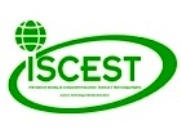 About the Journal –
About the Journal –
Welcome to the Homepage of the Current Studies in Comparative Education, Science and Technology, the official Journal of the ISCEST.
The Current Studies in Comparative Education, Science and Technology brings together scholarly work in education, science and technology and contain papers submitted to the conference of the International Society of Comparative Education, Science and Technology of Nigeria. The journal aims to promote interdisciplinary studies in education, science and technology and become one of the leading journals in the area. The journal will publish original research and papers that discuss, analyse or evaluate policies, or those that disclose relevant gaps in existing research.
Volume 2 Issue 2 December 2015 (ISSN 2465-
Editor-
Guest Editor: Prof Zehlia Babaci-
Section editors: Prof Omokaro Obire (Agricultural & Environmental sciences) & Prof Gertrude Shotte (Education Sciences)
General Editor: Prof James Ogunleye
Volume 2 Issue 1 July 2015 (ISSN 2465-
Editor-
Contributing Editor: Professor David Turner, Prof Charl Wolhuter, Prof Zehlia Babaci-
Section editors: Prof Omokaro Obire (Agricultural & Environmental sciences) & Prof Gertrude Shotte (Education Sciences)
General Editor: Prof James Ogunleye
Volume 1 Issue 1 December 2014 (ISSN 2465-
Editor-
Section editors: Prof Omokaro Obire (Agricultural & Environmental sciences) & Prof Gertrude Shotte (Education Sciences)
General Editor: Prof James Ogunleye
Include the following and related fields:
Prior to article submission, authors should clear permission to use any content that has not been created by them. Failure to do so may lead to lengthy delays in publication. The Journal is unable to publish any article which has permissions pending.
|
●
|
Authors obtain the necessary written permission in advance from any third party owners of copyright for the use in print and electronic formats of any of their text, illustrations, graphics, or other material, in their manuscript. Permission must also be cleared for any minor adaptations of any work not created by them.
|
|
●
|
If an author adapts significantly any material, the author must inform the copyright holder of the original work.
|
|
●
|
Authors obtain any proof of consent statements
|
|
●
|
Authors must always acknowledge the source in figure captions and refer to the source in the reference list.
|
Copyrights
Articles submitted to the journal should not have been published before in their current or substantially similar form, or be under consideration for publication with another journal. Authors submitting articles for publication warrant that the work is not an infringement of any existing copyright and will indemnify the publisher against any breach of such warranty. Authors retain copyright and grant the journal right of first publication. Authors can allow others to share the work with an acknowledgement of the work’s authorship and initial publication in this journal.
Peer review process
Each paper is reviewed by the editors and, if it is judged suitable for this publication, it is then sent to at least two independent referees for double blind peer review. Based on their recommendation, as well as consultation between relevant Editorial Board members the editors then decide whether the paper should be accepted as is, revised or rejected.
Journal Editorial Criteria
The journal evaluates papers based on four main criteria as follows:
The subject matter must be of critical importance to the comparative education, science and technology communities; the research question/s must fall within the CSCEST’s scope and the research itself must be well designed and executed; and on the whole the paper must be well presented – well written and conforming to the CSCEST’s style.
ISCEST Journal, ISCEST Secretariat: Plot 01, Gen. Andrew Azazi Drive, Off Imgbi Road, Amarata, Yenagoa, Bayelsa State, Nigeria